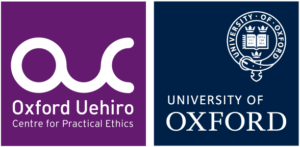Male Circumcision and the Enhancement Debate: Harm Reduction, Not Prohibition
This blog is a brief response to ‘Out of Step: Fatal Flaws in the Latest AAP Policy Report on Neonatal Circumcision’ by Steven Svoboda and Robert Van Howe, and the AAP Task Force on Circumcision’s Response. This is part of a special issue summarised by Brian Earp.
Around one third of men worldwide are circumcised. It is probably the most commonly performed surgical procedure. Circumcision is also one of the oldest forms of attempted human enhancement. It is and has been done for religious, social, aesthetic and health reasons.
Circumcision has a variety of benefits and risks, many of which are discussed in this issue. There is some dispute about the magnitude and likelihood of these benefits and risks. Some argue that the risks outweigh the benefits and circumcision should not be performed on children who are not competent to make their own decisions.
If it were true that the risks of circumcision clearly outweighed the benefits, great harm has been done and is being done globally through this procedure. Around one third of men have been harmed. This is an extraordinary public health injury. Presumably, some would be entitled to compensation.
The fact that few people think that there is not such a bad situation affecting millions of men indicates that most people implicitly believe that circumcision is not a significant harm, if a harm at all. (This is an example of the kind of argument called modus tollens. If p, then q. Not-q, therefore not-p.)
It is reasonable to conclude either that:
1) It is not clear from existing evidence whether the risks of properly performed circumcision outweigh the benefits, or vice versa.
Or
2) If circumcision is against the interests of an infant, it is only mildly so.
In general, people should make their own decisions about body modification and human enhancement when this is possible. Such an approach speaks in favour of waiting until a child is adult to make his or her own decision about circumcision. And procedures which are not clearly in a child’s interests should not be performed on that child. However, religious and other social exclusion may make delay in circumcision psychologically harmful.
It would be a mistake to ban circumcision, given its importance to many people. A dangerous “black market” would be created. As with other forms of potentially risky human enhancement, the best policy is one of harm reduction, not prohibition. Non-medical circumcision should be discouraged, but not prohibited(for further discussion see ‘Rational Non-Interventional Paternalism: Why Doctors Ought to Make Judgements of What Is Best for Their Patients’and ‘Liberal Rationalism and Medical Decision-Making’).
Read More »Male Circumcision and the Enhancement Debate: Harm Reduction, Not Prohibition
